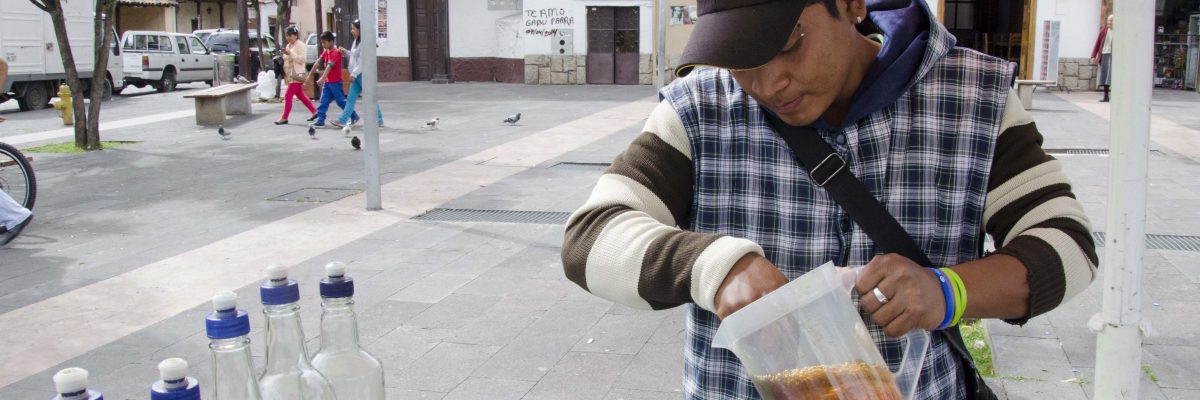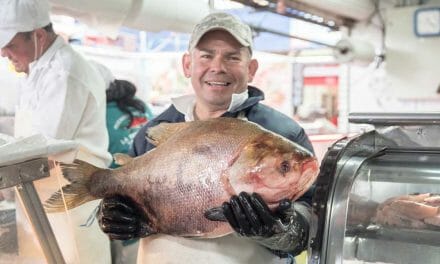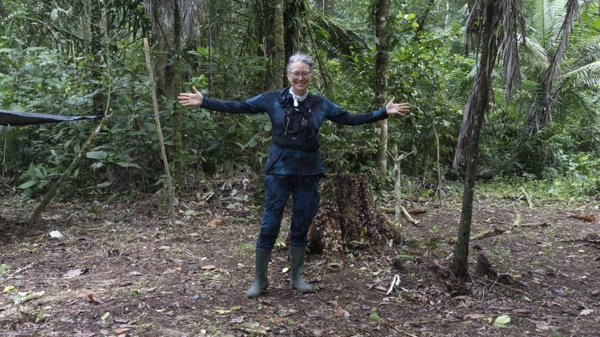As responsible travelers evolve, so do the stories we share.
This article is part of our living archive — trusted content we continue to care for.
First published on April 8, 2025 • Last updated on April 8, 2025.
We respectfully acknowledge that Tucson, Arizona sits on the ancestral lands of the Tohono O’odham Nation and the Pascua Yaqui Tribe. These communities have cared for and sustained this region for countless generations and continue to shape its cultural and ecological landscape.
We honor and respect the enduring relationship between these tribes and their ancestral lands. We pay our respects to their elders, past and present, and extend that respect to all Indigenous people today.
It’s no coincidence that Tucson was the very first city in the United States to earn a UNESCO City of Gastronomy designation. The people of the Sonoran Desert, where Arizona’s second-largest city was founded in 1775, have been cultivating and celebrating food for over 4,100 years.
On our recent visit to the city, Scott and I stumbled onto the origins of Tucson’s food culture, at first dining at fairly typical Mexican restaurants before finding the places that explained the ancient food connections we were struggling to understand.
The Roots of Tucson’s Food Culture
Only after a visit to the Mission Garden, a living agricultural museum highlighting growing systems from past to present, did the UNESCO creative designation make sense to us. It wasn’t about modern takes on Mexican food. It was about using heritage ingredients and traditional cooking methods that are time-tested and have survived technological advancement.
The Misson Garden provides a hands-on introduction to the first part, the heritage ingredients, like the three sisters: corn, beans, and squash. They also grow other ingredients native to the Americas which heavily influence Tucson’s traditional food culture: tomatoes, peppers, and agave.
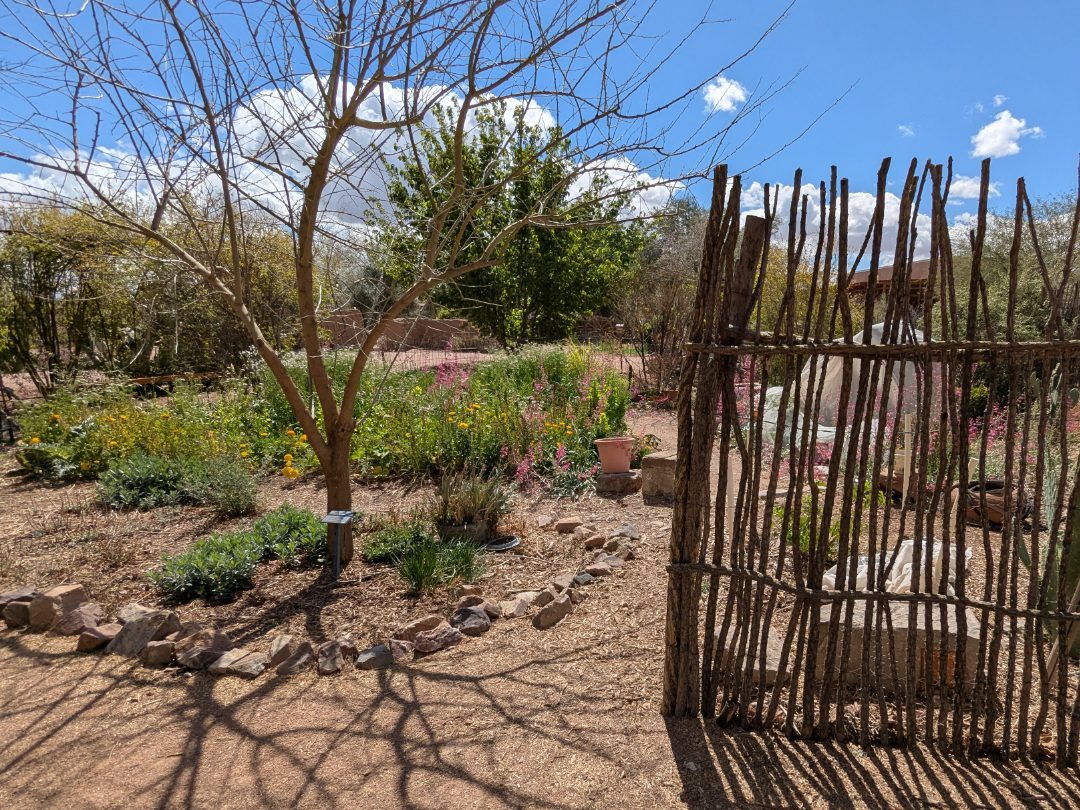
As we wandered the gardens, we saw the transition from Indigenous foods to crops brought in by colonial settlers, like figs, pomegranates, sour oranges, and sweet limes. Wheat became flour, a new staple taking form in the shape of bread. Mediterranean herbs like rosemary, oregano, and thyme flourished in the sometimes wet, sometimes dry conditions of the Sonoran desert.
We came to realize that anyone wanting to understand Tucson’s food culture should begin at Mission Garden.

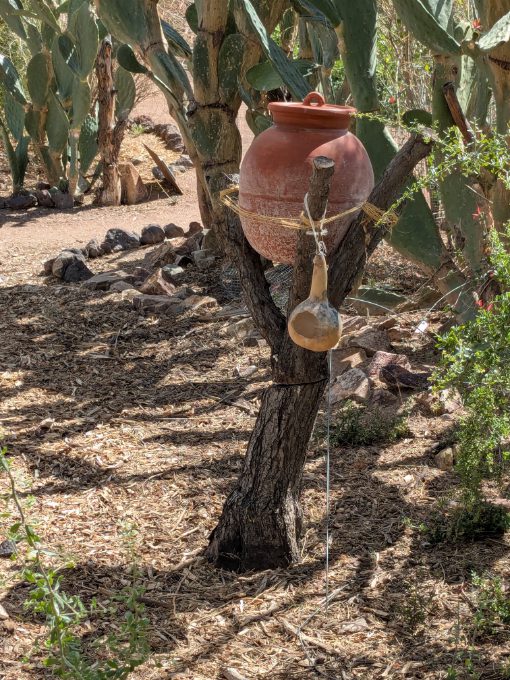
Savoring Tucson: Where Tradition Meets Modernity
While our impromptu tour of the gardens was educational, it also whet our palates. We were ready to go beyond the stereotypical Mexican food we had found thus far and wanted to eat food that celebrated ancient traditions. While I searched for Native American restaurants (more on that below), we ended up choosing these three restaurants, two focused on Mexican cuisine, the other on American cuisine. All serve breakfast, lunch, and dinner, making it possible to visit all three in a single day (eat up!).
Seis Kitchen
Website: https://www.seiskitchen.com/
What started as a humble food truck is now a beloved local chain known for its scratch-made dishes inspired by six distinct culinary regions of Mexico. We ate at the location near Mercado San Agustín, where flavors burst with authenticity, going above and beyond your standard Mexican restaurant. While many diners chose the dense burritos, we went for the taco plates and a side of guacamole. We highly recommend the Puerco Verde Taco plate with calabacitas (sauteed zucchini and yellow squash) on the side. When I go back, I want to try the Mexico City-style Quesadilla, made with a huge corn tortilla.
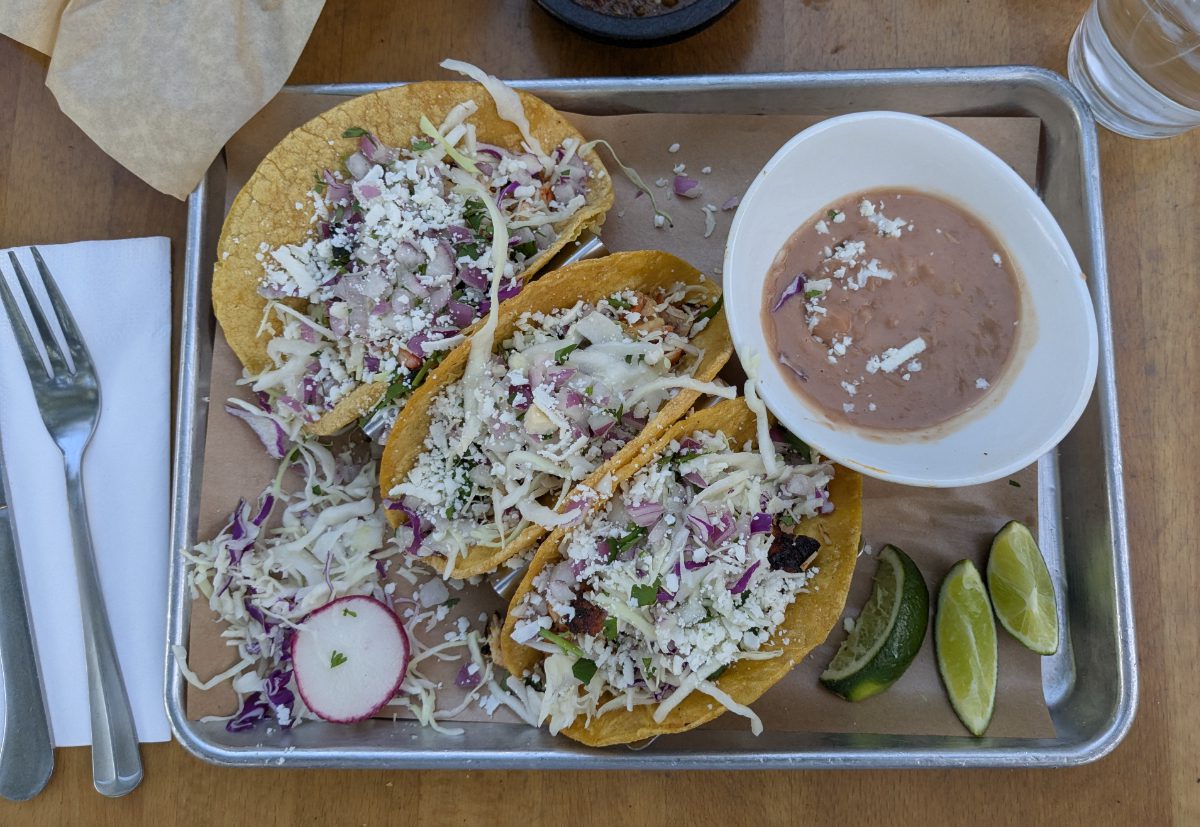
Seis doesn’t just honor tradition, they elevate it, using environmentally sound practices and whole ingredients, earning international praise for flavor and a kitchen ethos grounded in sustainability and cultural respect.
Charro Vida
Website: https://www.charrovida.com/
Local E-bike business owner, James Lorentzen and his wife Rachel invited us to Charro Vida, a restaurant that blends the Mediterranean diet with Sonoran Desert traditions. Charro Vida is part of the iconic El Charro Café family (the oldest restaurant in Tucson) but has carved a different path with a heart-healthy, plant-forward menu and a serious commitment to sourcing local and sustainable ingredients. Whether you’re savoring a grilled cactus salad or sipping a zero-sugar margarita, this place makes mindful eating feel indulgent.
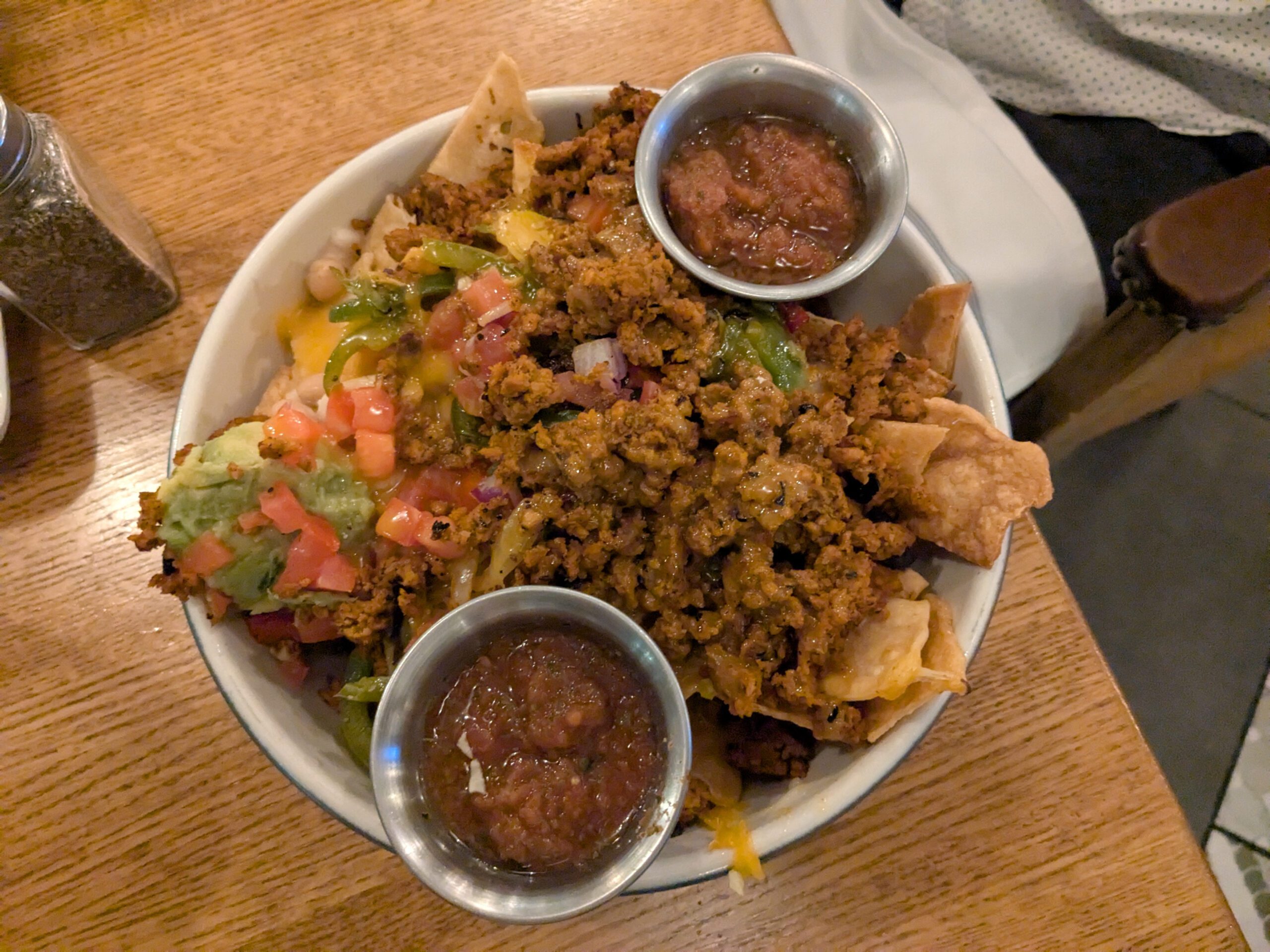
5 Points Market & Restaurant
Website: https://www.5pointstucson.com/
Tucked at the intersection of five roads and their historic neighborhoods, 5 Points Market is a community hub grounded in ethics, equity, and local sourcing. Their seasonal menu leans into vegetable-forward plates with bold, clean flavors. We chose to show up for happy hour, indulging in their curated selection of cocktails. Scott enjoyed a pisco-inspired drink and I went for a more traditional Negroni. Both were excellent. Then we created a tapas-style meal, ordering three small plates to share. Each was delicious and likely won’t be on the seasonal menu when you visit. We feel confident that anything you order will be absolutely delicious!
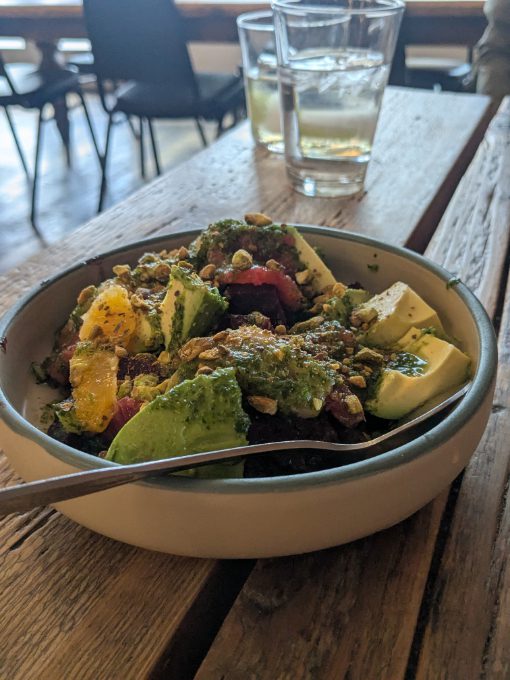
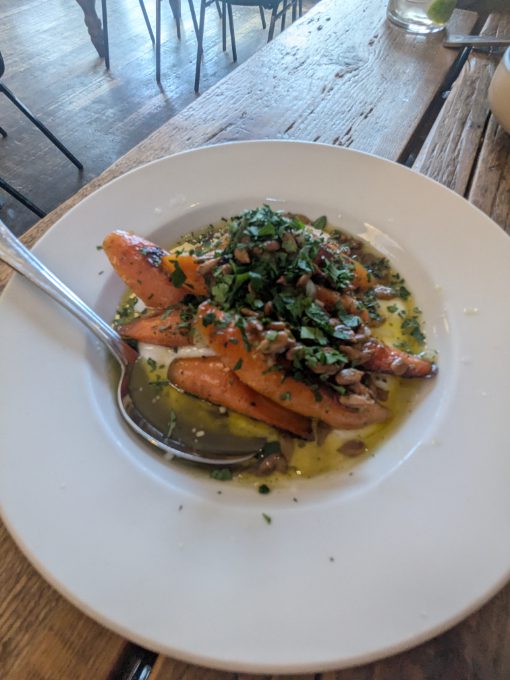
While we looked for a restaurant inspired by Native American food traditions, we were not convinced by the menus of two restaurants recommended by Visit Tucson: La Indita and Cafe Santa Rosa. Both highlight their Frybread (Popovers), a dish invented by the Navajo on the Long Walk of 1864, a forced relocation by the US government. While beans and corn appeared as Mexican-style dishes, we were looking for the third sister, squash. If we had more than a weekend to try places, we would like to give Cafe Santa Rosa a try for their addition of cholla buds to one of their salads.


